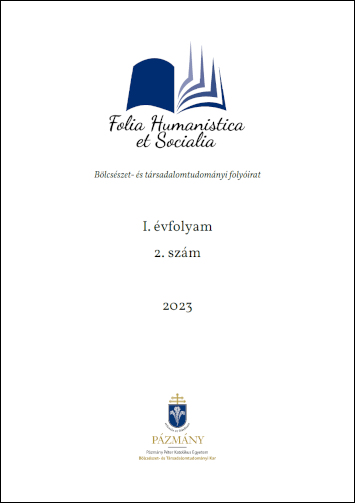Articles
Published 31-12-2023 — Updated on 11-06-2024
Copyright (c) 2023 Koncsos Levente

This work is licensed under a Creative Commons Attribution 4.0 International License.
Abstract
The aim of the study is to present and interpret the Pannonian finds related to Egypt. The choice of topic is justified by the fact that no such summary work has been published since the 1960s and that there is no research focusing specifically on the interpretation of these finds. The research has covered most of the Egyptian-related finds currently published, but this article focuses on the the most unique and interesting ones.
References
- Adamson, G. (2012). Letter from a Soldier in Pannonia. The Bulletin of the American Society of Papyrologists, 49, 79–94.
- Apuleius. Az Aranyszamár. Révay József (ford.), (1993). Európa Könyvkiadó.
- Bartus D. (2015). Bronzistenek. Római kori figurális bronzplasztika Brigetióban. Komáromi Klapka György Múzeum.
- Bíró, T. M. (1994). The Bone Objects of the Roman Collection. Magyar Nemzeti Múzeum.
- Deac, D. (2014). Imitating the Egyptian Hieroglyphic Script in the Roman Era. Zeitchrift für Ägyptische Sprache und Altertumskunde. 36-40. https://doi.org/10.1515/zaes-2014-0004
- Dobrovits A. (1943a). Egyiptom és a Hellénizmus. Parthenon – Franklin-Társulat.
- Dobrovits A. (1943b). Az egyiptomi kultuszok emlékei Aquincumban. Budapest Régiségei, 13, 47–75.
- Ferguson, J. (1970). The Religions of the Roman Empire. Thames and Hudson.
- Gesztelyi T. (1994). A római vallás története. Nemzeti Tankönyvkiadó.
- Guimlia-Mair, A. & Mráv, Zs. (2014). The Aes Corinthium Vessels from Egyed, Hungary. Folia Archaeologica 56, 73–102.
- Kušan Špajl, D. (2015). AQUAE IASAE – a Centre of Health, Cult and Oracle. Aquae Iasae, Recent Discoveries of Roman Remains in the Region of Varaždinske Toplice. 82–106.
- Lakatos P. (1964). Pannoniai lelőhelyű egyiptomi emlékek rövid áttekntése. [PhD disszertáció]. Szegedi Tudományegyetem.
- Lassányi G. (2016). Horusz isten szeme Óbudán. Óbudai Anziksz, 2 (1), 98–100.
- Lieven, von, A. (2009). Scripts and Pseudo Scripts in Graeco-Roman Egypt. In Andrássy, P., Budka, J. & Kammerzell, F. (szerk.), Non-Textual Marking Systems, Writing and Pseudo Script from Prehistory to Modern Times, (pp. 101-111).
- Mommsen, T. (szerk.). (1873.) CIL III: Inscriptiones Asiae, provinciarum Europae Graecarum, Illyrici Latinae. G. Reimerum, Berolini.
- Mráv, Zs. (2000). Der Besuch Caracallas und der Deus Invictus Serapis-kult in Pannonien. Communicationes Archaeologicae Hungariae. 67–97.
- Mráv Zs. & Gabrieli G. (2011). A Scarbantiai Iseum és Feliratos Emlékei. Arrabona, 49(1), 201–239.
- Paulovics I. (1915). Alexandriai istenségek tiszteletének emlékei a magyarországi rómaiságban. Heisler és Kózol.
- Pearson, S. (2021). The Triumph and Trade of Egyptian Objects in Rome. De Gruyter.
- Póczy K. (1998). A pannóniai késő császárkori múmiatemetkezések néhány tanulsága. Budapest Régiségei 32, 59–75.
- Sosztarits O. (2016). Az Iseum Savariense és a pogányság végnapjai. In Tóth E., Vida T. & Takács I. (szerk.). Szent Márton és Pannónia, (pp. 35–43.) Pannonhalma.
- Sosztarits O., Balázs P. & Csapláros A. (szerk.). (2013). A savariai Isis szentély. Szombathely Megyei Jogú Város Önkormányzata.
- Tóth, I. (1974). Eine doppelheit der Geshichte des Isis- und Sarapiskultes in Pannonien. Studia Aegyptica, I, 345–360.
- Wessetzky, V. (1961). Die ägyptichen Kulte zur Römerzeit in Ungarn. Brill.
- Wessetzky V. (1969). Az egyiptomi kultuszemlékek jelentősége Veszprém megyében. A Veszprém Megyei Múzeumok Közleménye, 8, 147–149.

